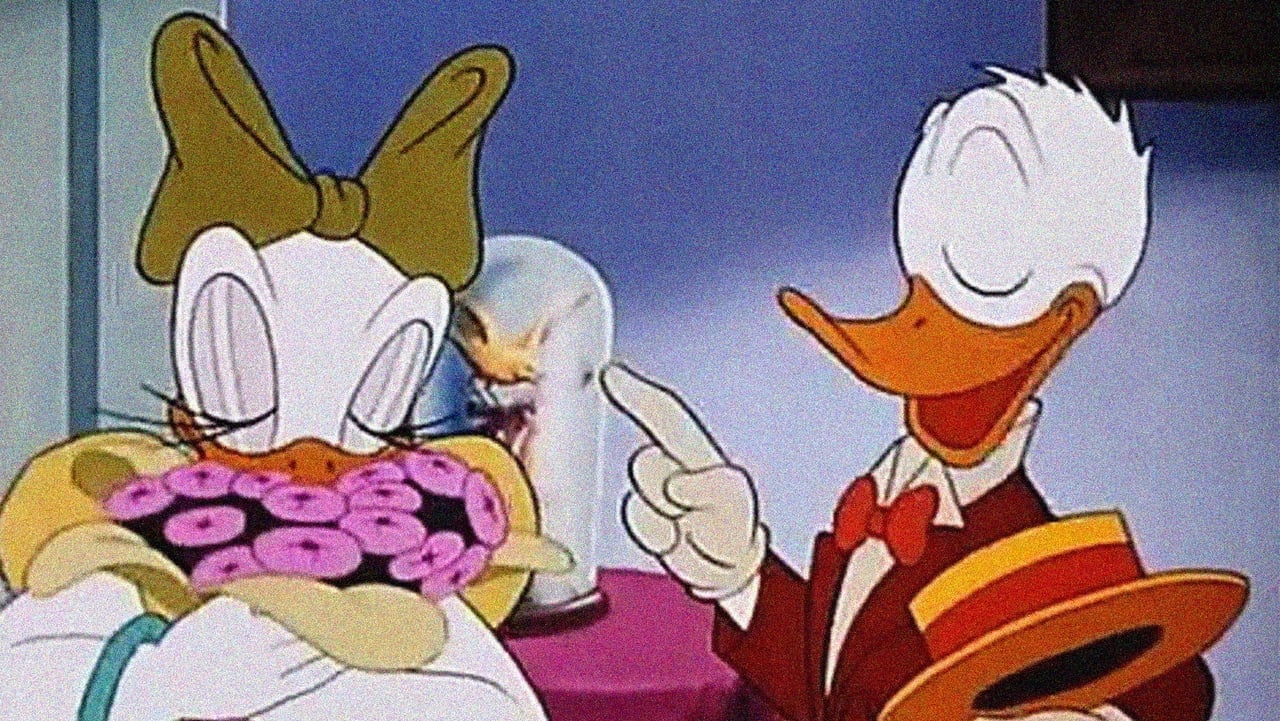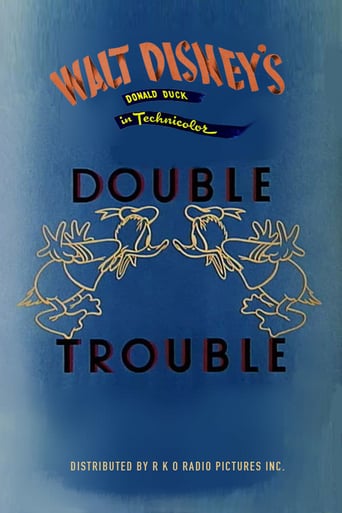Interesteg
What makes it different from others?
SpuffyWeb
Sadly Over-hyped
Cassandra
Story: It's very simple but honestly that is fine.
Phillida
Let me be very fair here, this is not the best movie in my opinion. But, this movie is fun, it has purpose and is very enjoyable to watch.
m-86730
This cartoon isn't funny and well-looking at all, presumably the worst Donald Duck short I ever seen, not only to Donald, mostly, to Daisy Duck, Arguably a literally comparison of Daisy Duck's kind and soft personality, quite contrary and bad!The initially scene is not impressed me, Donald got criticized by Daisy for his poor English speaking, that could be understably, for as we all know, Donald only can speak in his ambiguous voice, we got used to it, but how can Daisy been so angry? She should be a reasonable character, to my mind, and the scene when the telephone booth exploded seemed pretty violence, poor Donald!Donald himself I didn't got impressed, he seemed like a corward and only take advices from the look-alike duck, what to replace him to woo Daisy back, not knew what the duck's intention, he, obviously, got betrayed, and he became jealous, more fights, more profanity! And what's going on with Daisy? Shouldn't Daisy be angry to see the look-alike Donald by then? The plot is completely ambiguous.What the ending is the most disgust and horrible scene I ever saw, when the look-alike duck and Daisy entered the tunnel of love, and menacingly got rape by the look-alike duck, and later, a brutal fight began, I felt very unimpressed when I saw the two male ducks both thought they got Daisy, until they reliased the mistake, and Daisy, very angry, angrily ranted at them, she looked carzy and deranged, what's going on? a completely misrepresented for Daisy Duck! I wonder what will happened next, I can stand this no more.I don't want to say anything right now, this one is completely underwelming to me. Thumb down.NEVER WATCH!
MisterWhiplash
Donald needs to improve on his English (because when you sound like Donald Duck that can sometimes be a problem for Daisy Duck), so he happens to run into someone who looks just like him but talks like Trevor Howard or something, and then there's the old switcheroo (and of course the Trevor Howard Donald is attracted to Daisy on first sight). Wackiness ensues, and there's several funny send-ups with this premise Sure, yes, it's a sitcom premise... but the ending has kind of haunted me my whole life. That sounds heavy, but at the end of this short, when Daisy discovers the obvious (it happens after a climactic scene inside of a 'Tunnel of Love' portion of a carnival), she's in a frenzy saying a whole lot of fast gibberish at the two 'Donalds'. That's just... if you're a real little kid seeing it, trust me, it stays with you!
OllieSuave-007
Donald's classic and unique voice and wacky personality may have gotten the best of him when his relationship becomes at odds with Daisy. So, he hires a look-alike who has a charming demeanor and a suave voice to woo Daisy back for him. However, the look-alike seems to want Daisy all to himself.It's classic animation at some of its best and a lovable story that will send the audience laughing. It's charming and hilarious at the same time and a romance triangle that will leave you wondering how Donald will find himself out of this predicament.It's one of the funniest cartoons from my childhood and still holds up well to this day.Grade B+
Ron Oliver
A Walt Disney DONALD DUCK Cartoon.DONALD'S DOUBLE TROUBLE begins when he hires a sophisticated look-alike stranger to woo Miss Daisy.Donald's volcanic temper is the main attraction in what is a fairly amusing little film - written by Roy Williams, who would later become one of the adults on TV's classic Mickey Mouse Club. Using a Ronald Colman-like voice for the Duck's alter ego is an inspired idea and the same voice would be used again for DONALD'S DREAM VOICE (1948) & DONALD'S DIARY (1954). Clarence Nash provides the Duck with his normal voice.Walt Disney (1901-1966) was always intrigued by pictures & drawings. As a lad in Marceline, Missouri, he sketched farm animals on scraps of paper; later, as an ambulance driver in France during the First World War, he drew comic figures on the sides of his vehicle. Back in Kansas City, along with artist Ub Iwerks, Walt developed a primitive animation studio that provided animated commercials and tiny cartoons for the local movie theaters. Always the innovator, his ALICE IN CARTOONLAND series broke ground in placing a live figure in a cartoon universe. Business reversals sent Disney & Iwerks to Hollywood in 1923, where Walt's older brother Roy became his lifelong business manager & counselor. When a mildly successful series with Oswald The Lucky Rabbit was snatched away by the distributor, the character of Mickey Mouse sprung into Walt's imagination, ensuring Disney's immortality. The happy arrival of sound technology made Mickey's screen debut, STEAMBOAT WILLIE (1928), a tremendous audience success with its use of synchronized music. The SILLY SYMPHONIES soon appeared, and Walt's growing crew of marvelously talented animators were quickly conquering new territory with full color, illusions of depth and radical advancements in personality development, an arena in which Walt's genius was unbeatable. Mickey's feisty, naughty behavior had captured millions of fans, but he was soon to be joined by other animated companions: temperamental Donald Duck, intellectually-challenged Goofy and energetic Pluto. All this was in preparation for Walt's grandest dream - feature length animated films. Against a storm of naysayers, Walt persevered and over the next decades delighted children of all ages with the adventures of Snow White, Pinocchio, Dumbo, Bambi & Peter Pan. Walt never forgot that his fortunes were all started by a mouse, or that childlike simplicity of message and lots of hard work always pay off.

